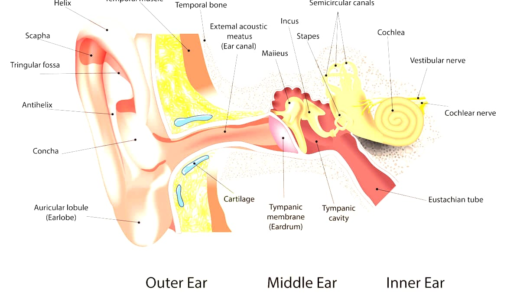Waterfowl, including ducks, geese, and swans, inhabit diverse environments and exhibit unique behaviors. They migrate seasonally, demonstrating remarkable adaptability. Their ecological role includes seed dispersal and nutrient cycling, though they face threats like habitat loss and climate change.
Types of Waterfowl
Waterfowl are fascinating birds, primarily known for their aquatic lifestyles. This group includes various species such as ducks, geese, and swans. Each type has unique characteristics and behaviors that make them stand out in their environments.
- Ducks: Often smaller than geese and swans, ducks are known for their distinctive quacking sounds. They inhabit diverse habitats, from freshwater lakes to urban ponds.
- Geese: Generally larger and more aggressive than ducks, geese are recognized for their honking calls. They prefer open water bodies and are often seen grazing in fields.
- Swans: These elegant birds are the largest of the three. Swans are known for their long necks and graceful movements. They usually inhabit larger lakes and rivers.
Understanding these types helps appreciate their roles in ecosystems and the beauty they add to nature.
Waterfowl Habitats
Waterfowl thrive in various habitats, each tailored to their specific needs. Common environments include:
- Wetlands: Marshes and swamps provide rich feeding grounds and nesting sites.
- Lakes and Ponds: These bodies of water offer safety from predators and abundant food sources.
- Rivers and Streams: Flowing water supports diverse aquatic life, attracting many waterfowl.
These habitats are crucial for their survival, providing food and shelter. Waterfowl are often found in both freshwater and saltwater environments, adapting to different conditions.
Differences Between Ducks and Geese
While ducks and geese share similarities, they have distinct differences that set them apart. Key differences include:
- Size: Geese are typically larger than ducks, with longer necks and bodies.
- Behavior: Geese are more social and often travel in larger flocks compared to ducks.
- Vocalizations: Ducks produce a variety of sounds, while geese are known for their loud honks.
Recognizing these differences enhances our understanding of their behaviors and interactions in the wild.
Adaptations of Waterfowl
Waterfowl have developed remarkable adaptations that allow them to thrive in aquatic environments. These adaptations enhance their survival and efficiency in finding food, avoiding predators, and reproducing.
- Webbed Feet: Waterfowl possess webbed feet that make swimming effortless. This unique structure allows them to navigate through water with ease.
- Streamlined Bodies: Their bodies are designed to reduce drag while swimming. This streamlined shape helps them move swiftly in water.
- Specialized Feathers: Waterfowl have waterproof feathers, thanks to oils they produce. This keeps them dry and buoyant while swimming.
- Long Neck: Many waterfowl, like swans, have long necks that assist in foraging for food underwater. This adaptation allows them to reach plants and small aquatic creatures.
- Enhanced Vision: Waterfowl have excellent eyesight, enabling them to spot predators and prey from a distance. Their eyes are positioned to provide a wide field of view.
These adaptations are vital for their lifestyle and play a significant role in their success as aquatic birds.
Waterfowl Diets
Waterfowl diets are diverse and depend on the species, habitat, and seasonal availability of food. Understanding what waterfowl eat helps appreciate their ecological roles.
- Herbivorous Diets: Many waterfowl, like geese, primarily feed on grasses, seeds, and aquatic plants. They graze in fields and wetlands, contributing to plant population control.
- Omnivorous Diets: Ducks often have varied diets that include both plant matter and small animals like insects and crustaceans. This flexibility allows them to adapt to different environments.
- Filter Feeding: Some species, such as swans, are filter feeders. They take in water through their beaks and filter out food particles, allowing them to consume tiny organisms and plants.
Waterfowl diets are crucial for their health and play an essential role in the ecosystems they inhabit.
Reproduction in Waterfowl
Waterfowl reproduction involves fascinating behaviors and strategies that ensure the survival of their young. Understanding these habits sheds light on their life cycles.
- Nesting: Most waterfowl build nests near water bodies. They use grasses, reeds, and other materials to create a safe space for their eggs.
- Egg Laying: Female waterfowl typically lay a clutch of eggs, which they incubate. The number of eggs varies by species but can range from a few to over a dozen.
- Parental Care: After hatching, waterfowl are attentive parents. They lead their ducklings or goslings to water, teaching them essential survival skills.
These reproductive strategies highlight the commitment of waterfowl to their offspring and their role in maintaining population numbers.
Migratory Patterns of Waterfowl
Waterfowl exhibit fascinating migratory patterns, primarily driven by seasonal changes and the availability of food. These birds often travel long distances to find suitable habitats, which is crucial for their survival.
- Seasonal Migration: Many waterfowl migrate seasonally. In the fall, they move south to warmer climates, while in spring, they return north to breed.
- Flyways: Specific routes, known as flyways, guide their migration. For example, the Atlantic Flyway runs along the eastern United States, while the Pacific Flyway stretches along the west coast.
- Factors Influencing Migration: Temperature, food availability, and daylight length significantly influence their migratory behavior. As these factors change, so does the timing of their migration.
Understanding these patterns helps in conserving waterfowl populations and their habitats.
Interesting Facts About Waterfowl Behavior
Waterfowl display a variety of intriguing behaviors that are both entertaining and educational. Here are some fascinating facts:
- Social Structure: Many waterfowl species, particularly geese, are known for their strong social bonds. They often travel and feed in family groups.
- Communication: Waterfowl use various vocalizations to communicate. Each species has distinct calls that serve different purposes, from attracting mates to signaling alarm.
- Foraging Techniques: Waterfowl employ unique foraging techniques. For instance, ducks might dabble on the water’s surface, while swans can dive deeper to find food.
These behaviors highlight the adaptability and intelligence of waterfowl in their environments.
Ecological Role and Threats
Waterfowl play a vital role in their ecosystems, contributing to biodiversity and ecological balance. They help control plant populations and serve as prey for various predators.
- Seed Dispersal: As waterfowl feed, they often consume seeds and fruits, which they later excrete in different locations, aiding in plant propagation.
- Nutrient Cycling: Their droppings enrich the soil and water, promoting healthy aquatic ecosystems. This nutrient cycling is essential for maintaining biodiversity.
- Threats: Despite their importance, waterfowl face numerous threats, including habitat loss, pollution, and climate change. These factors can significantly impact their populations.
Conservation efforts are crucial to protect waterfowl and their habitats, ensuring their ecological contributions continue.





Comments are closed.